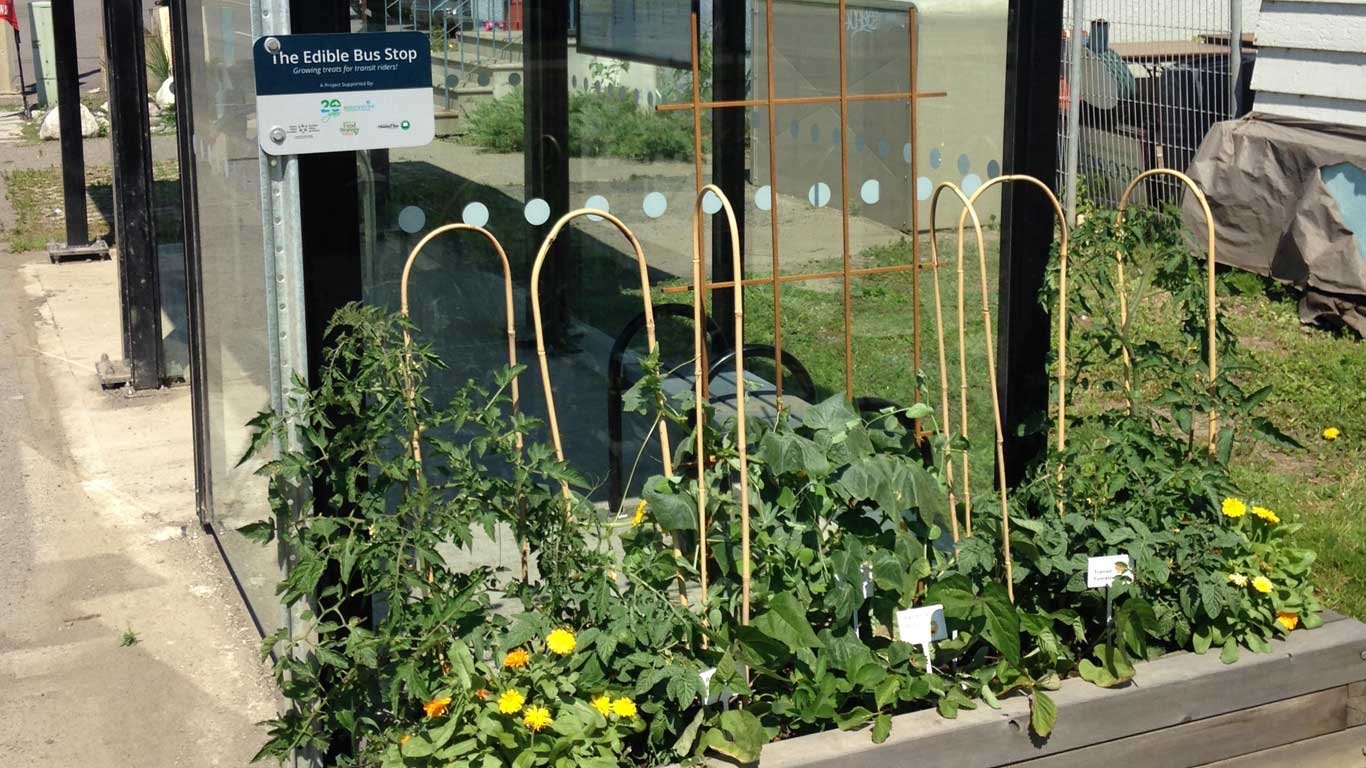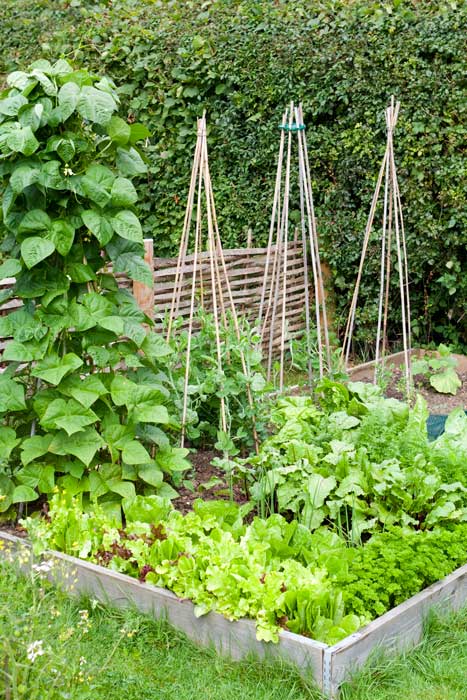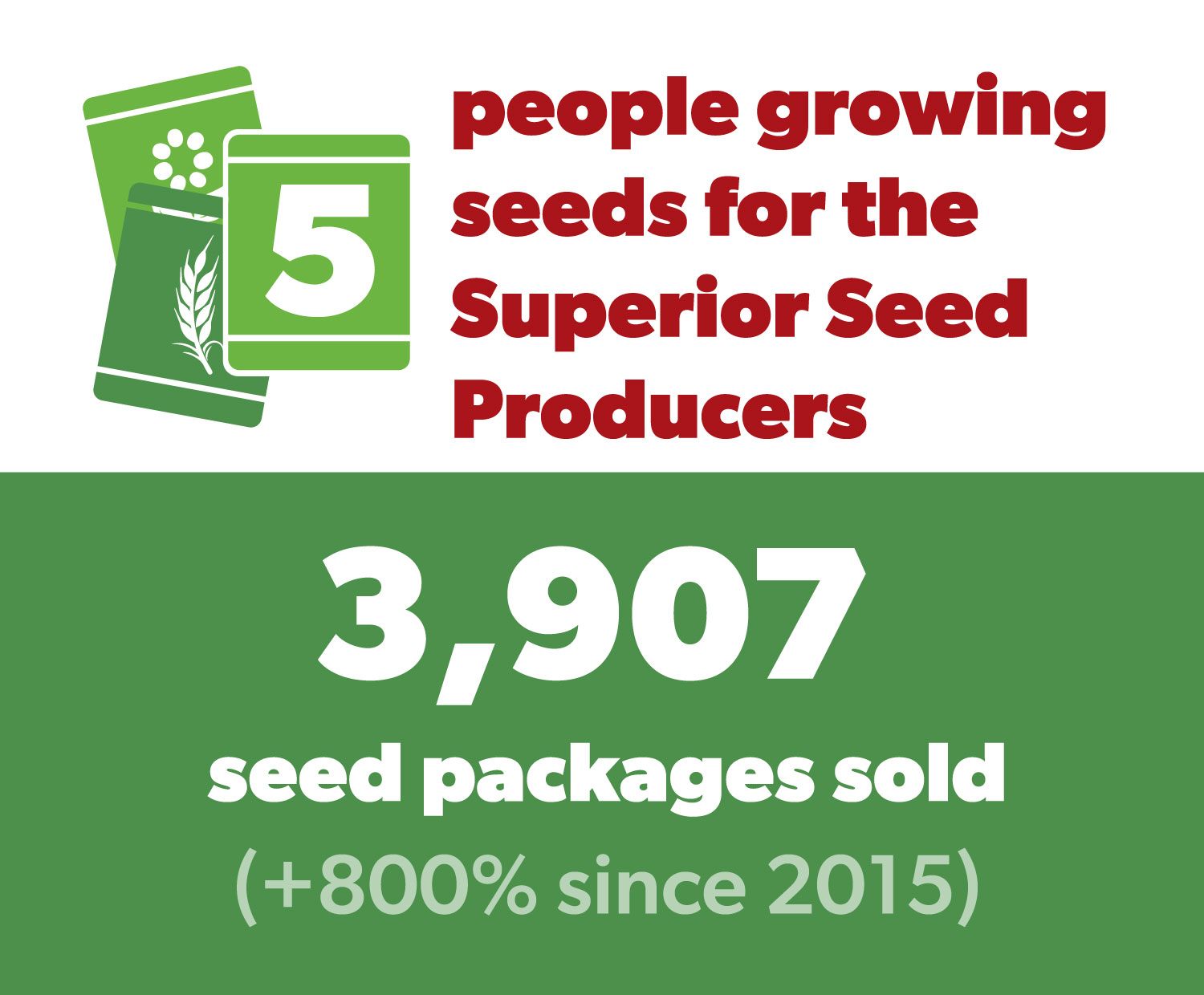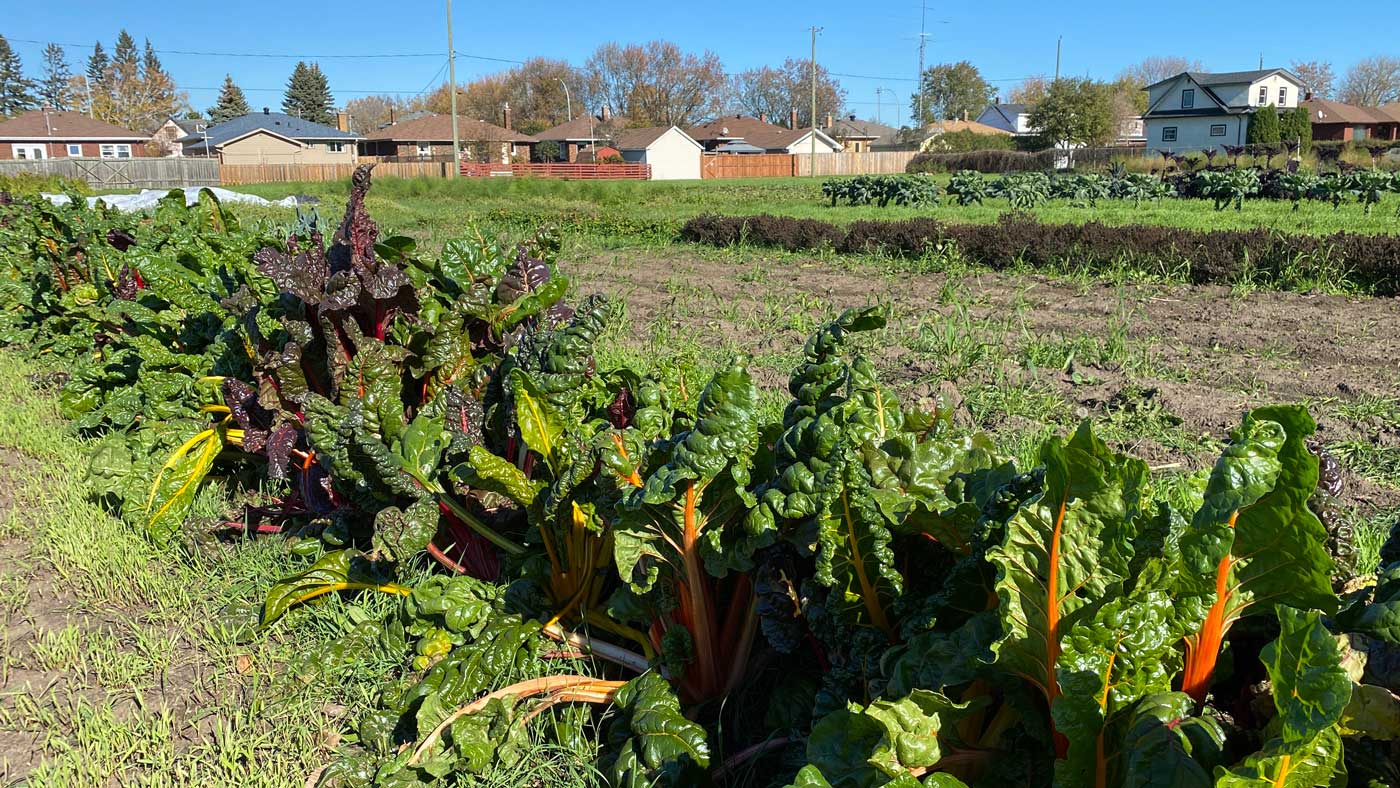Urban agriculture is thriving in the Thunder Bay area. Through continued participation in urban agricultural activities, people and organizations are showing their interest in local action to increase access to fresh food, enhance the environment and build a stronger sense of community.
Community gardens continue to be one of the most active types of urban agriculture across the region. Most commonly, community gardens are located in neighbourhoods across the city and are divided into individual plots for residents to use to grow food during the growing season. Roots Community Food Centre, as well as Confederation College and Lakehead University host larger plot-style community gardens to give community members an opportunity to grow food and get connected to their communities.
Several organizations, including the Salvation Army and Willow Springs Creative Centre, have also established community gardens as a way to build community, to grow fresh food to use in their programming, and to supply healthy food for low-income residents. Institutions such as the Thunder Bay Regional Hospital use gardens to enrich patient experiences, while workplaces such as the Ontario Ministry of the Environment, Conservation and Parks and the Thunder Bay District Health Unit have established gardens to engage staff and grow produce for use in programs.
Many Elementary and Secondary Schools continue to engage students and contribute to skill development through the use of school gardens. Students can participate in growing, harvesting and preparing fresh herbs, fruits and vegetables in classes and at special events. The data shows that access to community and school gardens was reduced between 2020-2021 due to the COVID-19 pandemic, but recent data, along with reports from members of the Thunder Bay + Area Food Strategy, suggest that there appears to be a strong re-engagement with community gardening in 2022. Another positive trend across some school boards is the growth of land-based education programs, such as Kendomang Zhagodenamnon Lodge (KZ Lodge), that support hands-on learning and cultural teachings with students and the broader community.
Growing awareness about the loss of pollinator populations (e.g., bees and butterflies) is driving many people in urban areas to include native plant species that provide food for pollinators (e.g., milkweed, fireweed, yarrow, goldenrod, etc.) in community gardens, backyard gardens, or dedicated pollinator gardens. In 2022, the City of Thunder Bay made changes to the Yard Maintenance By-laws (now the Clean and Clear Yards By-law) to encourage food and pollinator-friendly practices.
Households are also taking a more active role in urban agriculture through the growth of backyard vegetable gardens, primarily driven by food access concerns related to the COVID-19 pandemic. One important indicator of this interest is the increased sales of locally produced seeds. Since 2015, there has been an 800% increase in the number of locally produced seeds sold through two established local seed producer businesses. According to Superior Seed Producers, people want to buy seeds that are adapted to our climate and because they believe that local production and control of our seed supply is an important condition of community food security.
Individuals and organizations continue to push boundaries within urban areas in terms of how and where food can be grown. The Court Street Edible Food Forest and EcoSuperior’s Edible Bus Stop are two examples of how access to fresh food can be improved by growing food in small, underutilized areas. Both are also examples of fruitful partnerships between community organizations, citizens and the municipality to create projects that beautify areas and provide a valuable service. There has also been a 50% increase in the number of residents offering up their urban fruit produce to organizations for gleaning, such as apples for the ‘Bay City Cider’ processed and sold by Roots Community Food Centre.
Historically, raising animals for food in urban places was very common but recently, most forms of animal agriculture have been forced into rural areas. Some livestock production (e.g.rabbits and apiaries) still exist in urban areas, but it is limited due to zoning restrictions. The biggest urban agriculture change since 2015 is the addition of two large urban farms established and operated by Roots Community Food Centre with support from the City of Thunder Bay and Lakehead District Schools. These urban farms offer employment programs, greenhouses, seed production, and produce for food access programming and public sale, as well as community garden plots.
Interest in regionally available and foraged forest and freshwater foods also permeates into our urban areas as evidenced by continued interest in foraging and sustainable harvesting workshops. There is also an observed trend of an increased number of workshops, programs and events with an Indigenous food sovereignty focus. For example, a growing number of hide-tanning workshops are being offered regionally, bringing renewed interest in this practice.
Despite these recent improvements, there is still a lot of potential to grow and raise more food in urban areas. To date, support for urban agriculture has been offered in an ad hoc way. Municipal policies that are supportive of urban agriculture include dedicated staff time for garden coordinators, demonstration projects, community workshops and other educational tools to expand awareness and encourage participation. A variety of partnerships and initiatives are needed to involve more individuals, families, organizations and businesses to bring food production back into urban areas.






